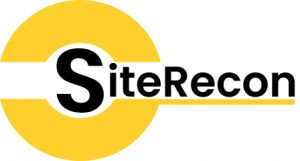
New Employee Orientation
Steven Cesare, Ph.D.
A landscaper from New Jersey called me the other day to talk about her company’s New Employee Orientation Program. As an ardent crusader of company culture, I believe an employee’s first impressions of a company (e.g., employment application, selection interview, pre-employment process), as well as its New Employee Orientation Program and Onboarding Plan, can have myriad immediate and long-term benefits. Lamentably, others frequently share the mindset that a New Employee Orientation Program is necessary but bureaucratic, time-consuming and unproductive, and worthy of minimal resources though never including an owner’s personal appearance.
But keep in mind: “Our Employees are Our Greatest Asset!”
Our discussion addressed the three primary components of most New Employee Orientation Programs:
1) Company Culture. Serving as the prologue to the employee’s career with the company, the facilitator should discuss the company’s origin, background, and current status, replete with names, success stories, and role models who have contributed to the company’s success. This facet of the presentation should highlight the Company’s Mission Statement, Core Purpose and Values, and complimentary lists of acceptable and unacceptable behaviors consistent with promoting team morale, professional growth, and organizational achievement that distinguish the company from local competitors.
If a company can’t sell its culture to a new employee, how can it sell its brand to a new customer?
2) Administrative. The following paperwork is routinely reviewed, processed, and recorded as part of most New Employee Orientation Programs: job application, conditional job offer letter, pre-employment drug testing results, I-9 Form, W-4, job description, performance appraisal, employee handbook, arbitration agreement, confidentiality agreement, ObamaCare paperwork, uniform and PPE acknowledgment, cell phone issuance agreement, key issuance agreement, vehicle take-home form, company timesheet, and direct deposit form.
We all know it’s paperwork and compliance. So, let’s get it all done in one sitting, instead of pretending to be busy on the employee’s first day of work and eventually get half-assed paperwork several weeks later, still pretending to be busy.
3) Safety. This section of the New Employee Orientation conveys various aspects of safety documentation (e.g., safety tailgate calendar, fire prevention program, emergency evacuation program, lockout/tagout, injury reporting procedures, globally harmonized system training, proper lifting techniques, and PPE) as well as hands-on equipment training (e.g., mowers, chain saws, hedge trimmer, string trimmer, edger, blower). Hands-on equipment training is preferred over video-based training in that it requires each employee to demonstrate behavioral competence (e.g., starting, operating, shutting off) that may provide exculpatory evidence if the employee incurs an equipment-based injury.
Companies uniformly speak aspiringly about developing a “Safety Culture.” I wonder when, where, and how that “Safety Culture” begins? And by whom?
It is well demonstrated that a sound, crisp, and supported New Employee Orientation Program can impact new employees, the existing culture, and future results.
Check Out Harvester Steve Cesare’s
NEW OFFERING!
Harvest Group Partners
Click the icon below to download the Harvest Group Mobile app!
What do you want to learn more about?
The Harvesters want to know what topics you would like to see us discuss. Click below to submit your ideas!





